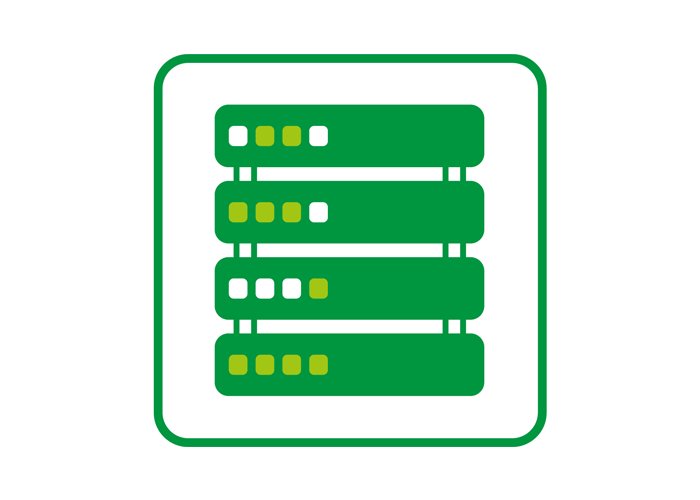Frequently asked questions - Database
Do you have a question that is not on the list? Ask it by using the form at the bottom of the page

Database
General
Stichting NMD manages both the National Environmental Database (NMD) as well as the NMD Process Database. The NMD is a database filled with environmental declarations. This is the database that is used by the calculation tools to produce ECI and EPD calculations. The NMD Process Database is used as source (to draw up LCAs) for the data included in the environmental declarations in the NMD.
The environmental declarations and basic profiles should be reviewed for timeliness from time to time and then updated as necessary. The same shelf life applies to both with a periodic expiration date of 5 years. After this period, environmental declarations and basic profiles must be updated. This can also be done in the interim, for example after changes in the production process that affect environmental performance. Data owners can have their data changed by submitting a new template.
A background process is a process that affects a producer's or supplier's product, but over which the producer or supplier has no direct influence and which occurs elsewhere in the chain; for example, production of electricity or a raw material.
The NMD Viewer is accessible to everyone. You can find the Viewer here. Please note that there is a cost for publishing data. More information about the costs can be found on our fees page.
A basic profile is an environmental profile of a module from the life cycle and part of an environmental declaration in the NMD. A basic profile can also be included in the NMD process database if desired. Basic profiles are not delivered separately.
Spread our name and share our actions. Our socials and newsletter make it easier to stay up to date with the latest developments
Data
The starting point of the NMD is to work with as many propriety (category 1) environmental declarations as possible. Besides challenging companies to innovate, proprietary environmental declarations best represent actual environmental impact.
However, the NMD currently also contains many averages (category 2 and 3) due to a lack of data supplied by manufacturers.
All mandatory and optional functions are described in functional descriptions, and divided into so-called main elements, named in accordance with NL-SfB and RAW. Examples of main elements are 'Floors; structural' (m2) and 'Stair slopes; stairs' (pieces). For each main element, the functions are broken down into so-called element parts, such as 'Anchors' (pieces), 'Peripheral facilities' (m) and 'Railings and balustrades' (m) as part of the main element 'Stair slopes; stairs'.
Some products in the NMD fulfil all the mandatory functions described by the different element parts of a main element. These products are called total products. However, most products only fulfil the function(s) of some mandatory element parts. These products are called partial products. Thus, the difference between a total and a partial product is that several partial products are needed to cover a main element, whereas a total product covers all mandatory functions of the element at once.
When filling in a sub-product in the database input module, the product parts are filled in per element-part whose function they cover. It is possible that a product part consists of sub-parts, which collectively cover the element part in question. An example is the product component 'Pile', consisting of the subcomponents 'concrete' and 'reinforcement', which covers the element component 'Piles' of the main element 'Pile foundations; driven'.
For all products potentially present in the reference buildings according to the energy performance regulation (BENG) there is an environmental declaration on database adaptation with environmental information in the NMD. Apart from this, if there is a need from the (consumer) market for an environmental declaration or map for a new product, the NMD can approach the market to prepare a specific environmental declaration. The responsibility for providing LCA data for inclusion in the NMD lies with the producers. Another option is that the NMD, following an internal procedure, decides to prepare a brand-unrelated (category 3) statement or map for a new product.
The NMD is working hard to update all category 3 declarations on the one hand but also to expand them with new declarations that will help to create a complete structure. This year and also next year there will be a lot of action on this. But in fact, this is a continuous ongoing action for the NMD to get/keep the database current and complete.
Version
The ‘database version’ refers to the system version and relates to the system updates behind the data stored in the NMD. The ‘data version’ refers to data updates – adding, editing or deleting data. In the past the data and system version ran in parallel: With the release of NMD2.3, both the data and the system are updated. In the new NMD3.0 system, these two are separated. The data version has been time-dependent since that time. As the data are updated every 24 hours, a new version of the data appears every 24 hours. The system version remains the same.
The data in the viewer is derived from the product maps in the NMD. Currently, the viewer does not always display the current status of the NMD. This is due to technical problems. We are working hard to solve the problems and make the viewer up-to-date again. The issue is a link between the database and the viewer and therefore has nothing to do with the data in the database. However, the data of published product maps are correctly stored in the database and can also be used in the validated calculation tools.
Subscribe to our Newsletter
Sign up now and receive our newsletter (in Dutch) 10 times a year!
